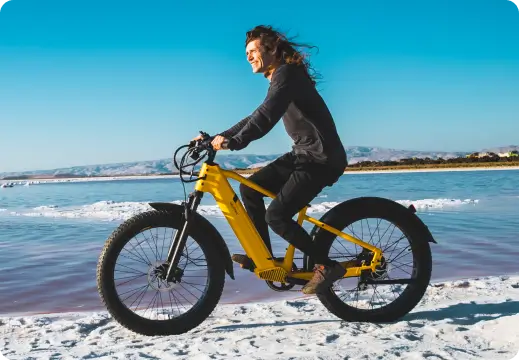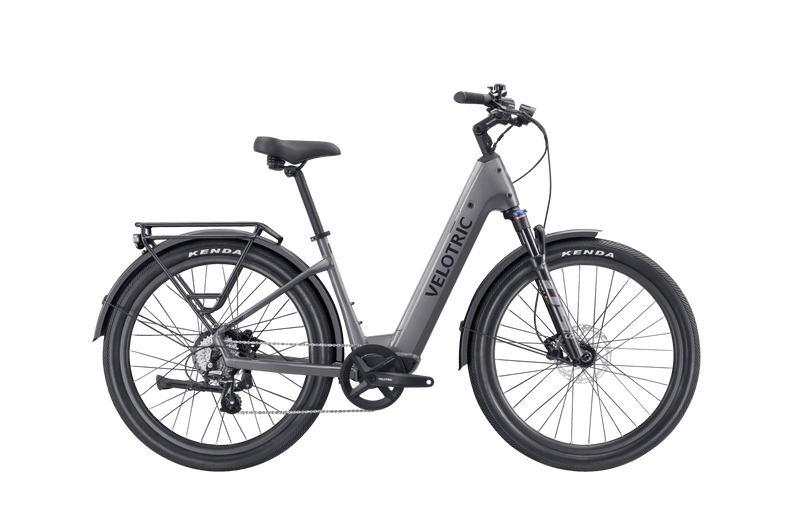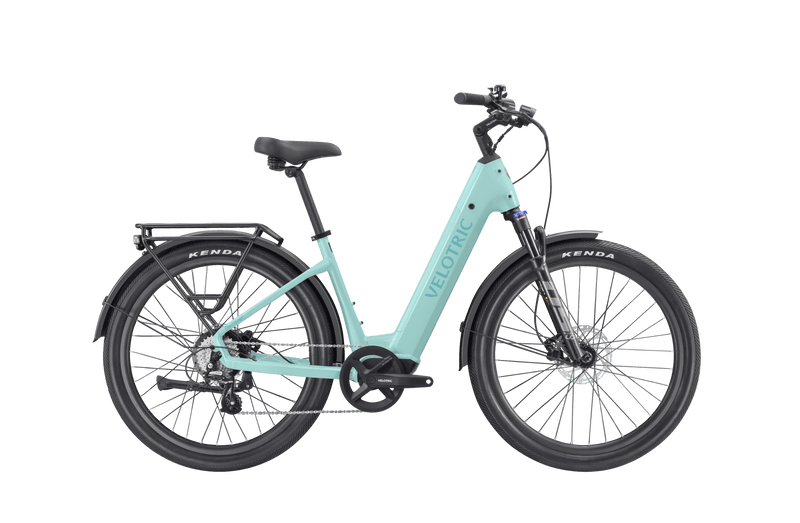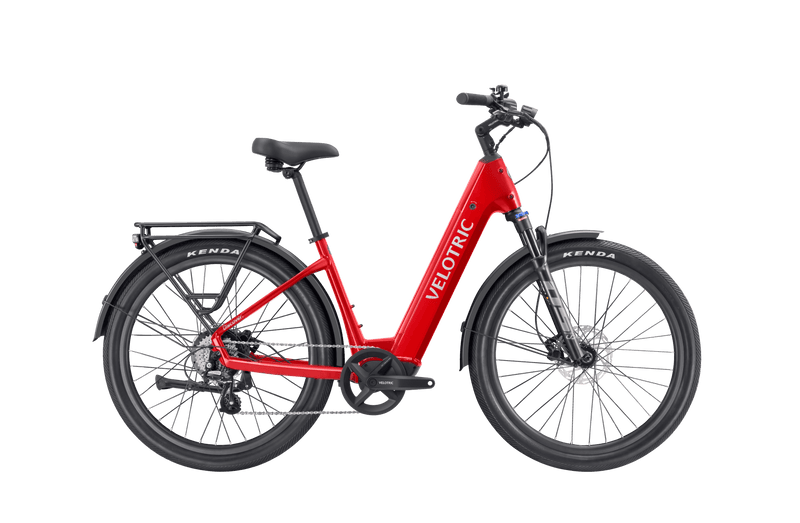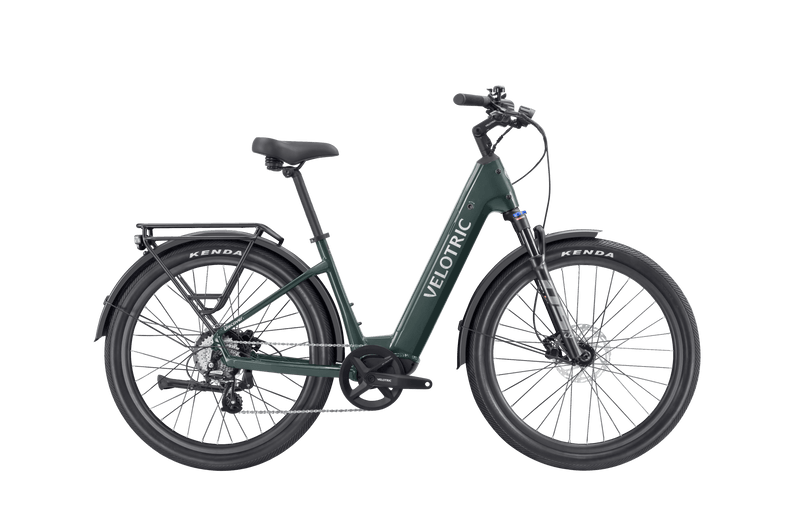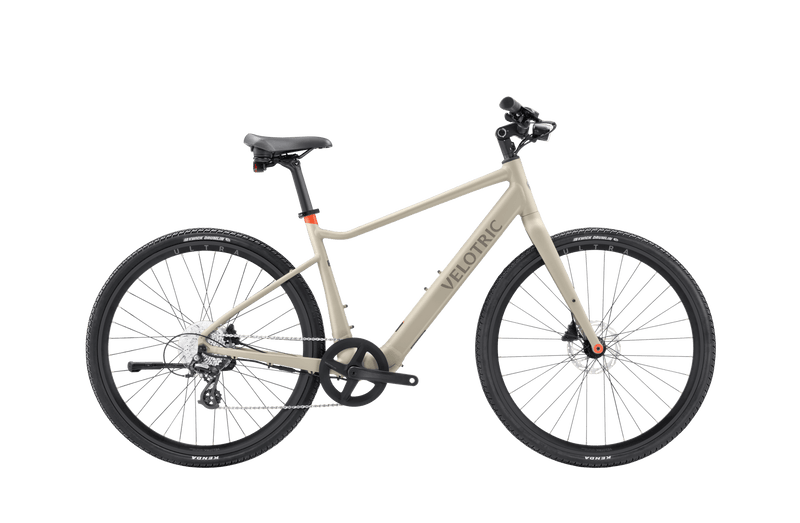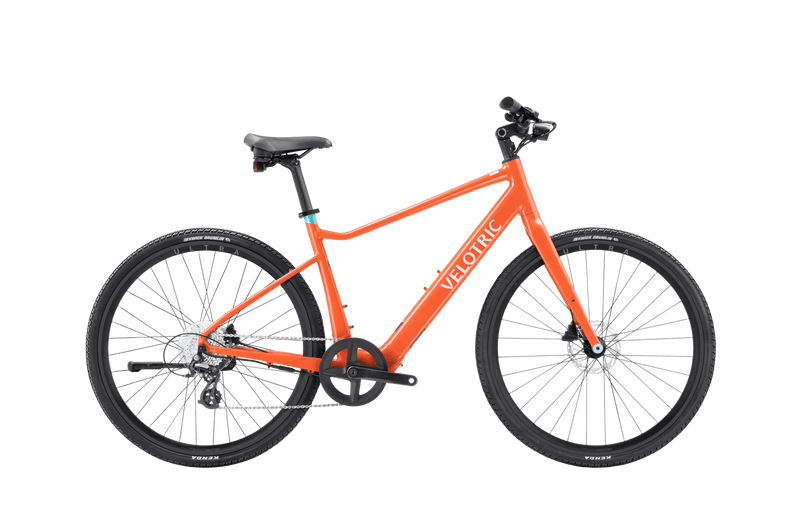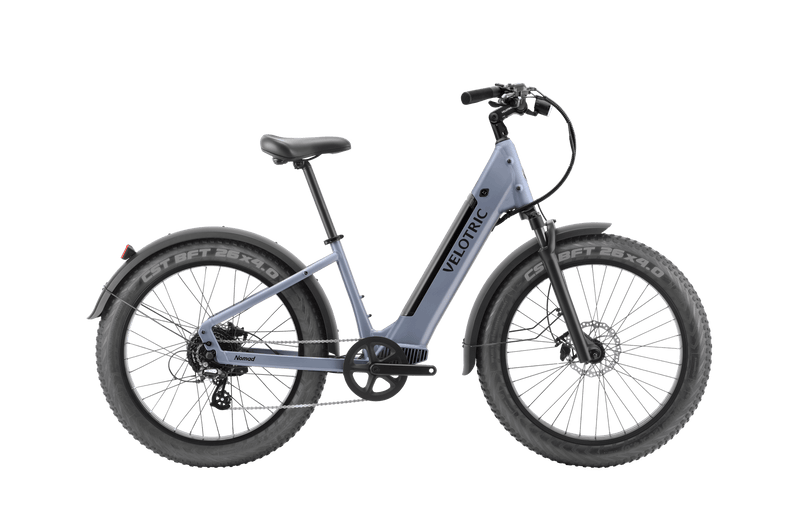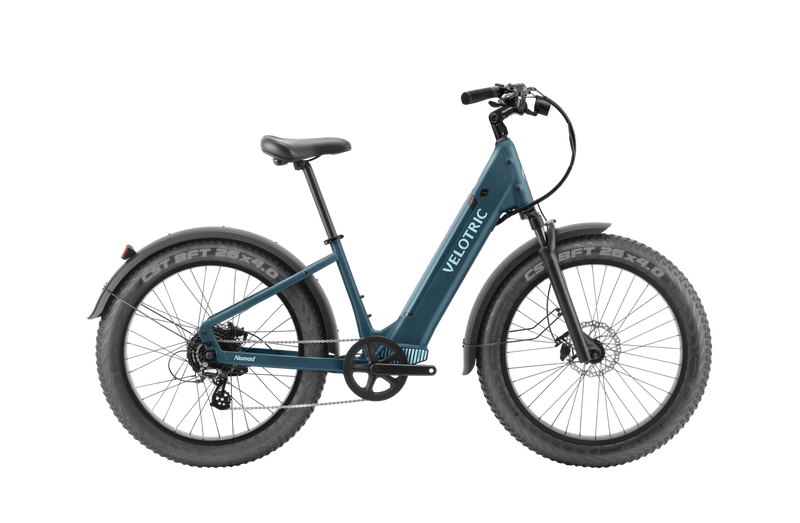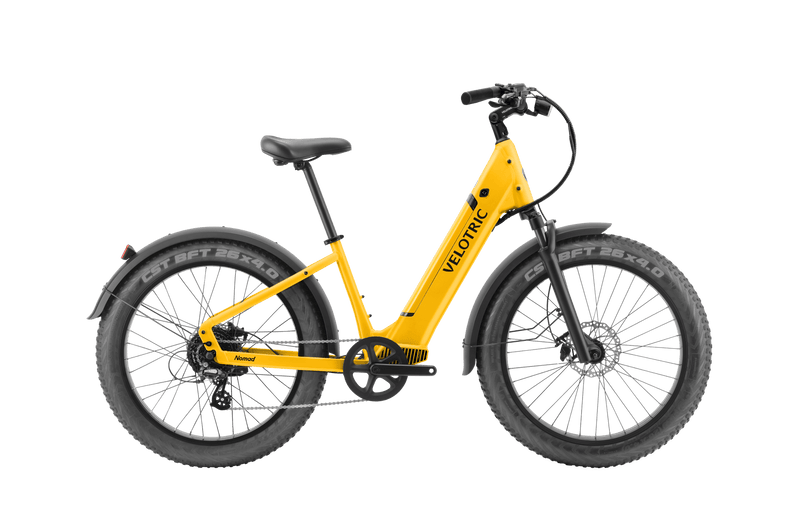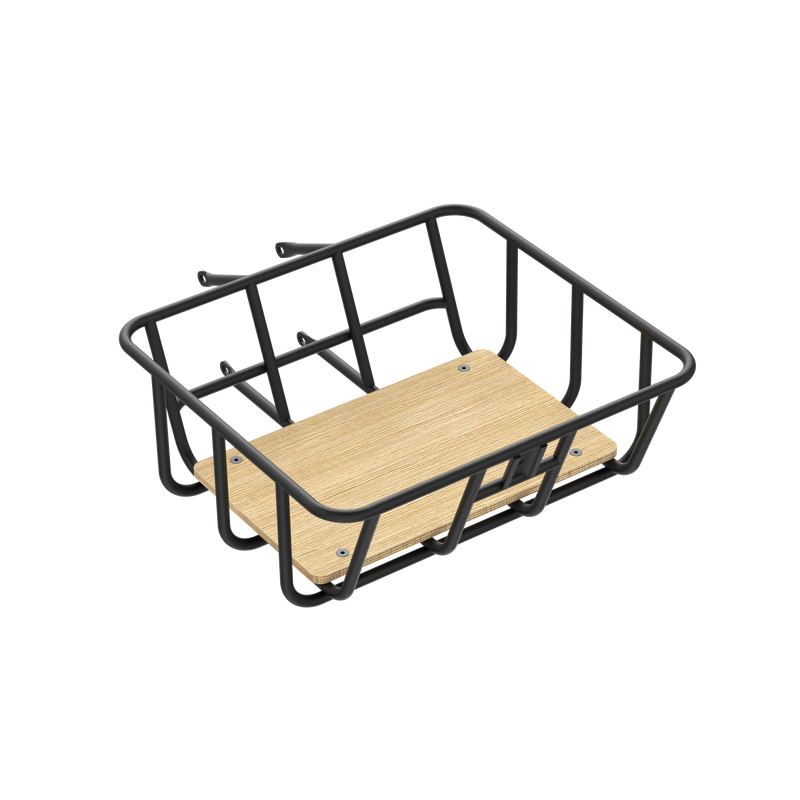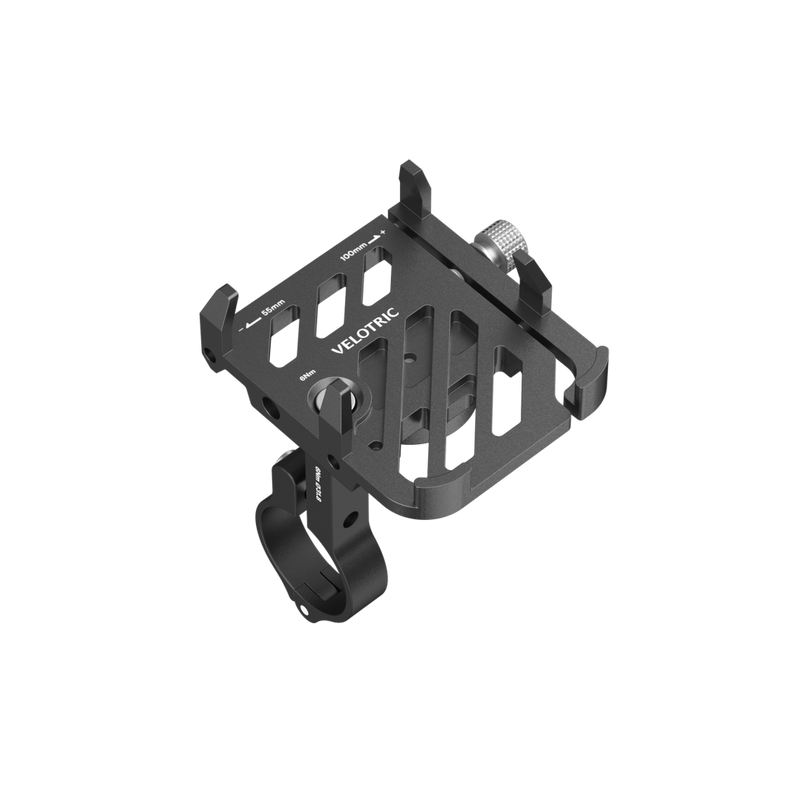Fat biking is simply cycling on a fat-tire bike, which has wider tires than a usual bike. In recent years, fat-tire bikes have gained popularity — and for good reasons. With their oversized tires, these bikes offer greater stability and make it easier to tackle tough, unpaved terrain, from mountain trails to snowy surfaces.
Wondering whether fat biking is for you? We’ve got you covered with this comprehensive guide. Read on to learn what makes fat tire bikes unique and discover the benefits of fat biking.
Fat tire bikes explained
Let’s start with the obvious: The main characteristic that sets a fat-tire bike apart from a regular bike is the tire width. These two-wheelers have fatter, wider tires.
However, that’s not the only characteristic distinguishing fat tire bikes from traditional bikes. A bike’s frame has to be adapted to accommodate fat tires: The forks are wider to allow for the larger front and rear wheels.
Fat tire bikes also tend to have heavier, more robust frames, as they’re largely intended for off-road use. They may also tend to have heavy-duty suspension systems to accommodate the bumps and jumps that come with off-road riding.
What’s the purpose of fat tire bikes?
Fat tire bikes are uniquely suited for all-terrain riding. The wide tires allow for more contact with the ground, enhancing stability on uneven surfaces so you can cruise over ruts and bumps with ease.
You can also cycle more confidently on various terrains, including gravel, snow, dirt, mud, and sand — the kinds of surfaces where a regular bike might wobble, slip, or otherwise lose stability.
But fat biking shouldn’t be confused with mountain biking — these two types of bikes have distinct differences.
Mountain biking is all about steep inclines. So, mountain bikes tend to have advanced gearing systems to accommodate hilly landscapes. A fat tire bike won’t necessarily have this.
The wheels of fat tire bikes versus those of mountain bikes (MTBs) vary as well. For example, the typical fat tire bike wheel has a width of 100-127 millimeters (4-5 inches). In contrast, an MTB tire is typically 45-56 mm (1.7-2.2 inches) wide.
Thanks to their larger size, fat tires also tend to be heavier. Finally, the tire pressure of a fat bike tire is also usually less than that of an MTB tire.
Are fat tire bikes difficult to ride?
If you think that a fat tire bike will be harder to ride because of the larger tires, think again! Fatter tires offer more stability, anchoring the bike more firmly to the ground. You’ll experience less wobbling as a result.
That said, there are some potential drawbacks to consider. Fat tire bikes tend to be heavier than their slim-wheeled counterparts. This can make them more difficult to maneuver. For example, they might feel unwieldy when handling tight turns, for example.
Additionally, fat tire bikes aren’t ideal for all purposes. Say you want a bike that gets you quickly from A to B — for instance, for biking to work in the city. A fat tire bike isn’t the best here because the wider tires create more friction on the road when riding, slowing you down. A slim-tired commuter bike is preferable.
What do you need to get started with fat biking?
If you’re thinking of trying fat biking, you might wonder what you need to prepare (other than the bike, naturally). Do you need special clothes? Is it necessary to do some fancy stretches before you pedal off?
Don’t stress — it’s not that complicated. Preparing for a fat biking trip is pretty much the same as preparing for any cycling journey. Here’s the gear you’ll need:
- A Helmet. Helmets can protect against serious face and brain injuries if you're in a collision. We always recommend wearing one, even if your state doesn't mandate it (find out your state’s helmet laws).
- Weather-appropriate clothing. Make sure you're dressed for the season, focusing on layers. Our guide to all-season cycling outfits has you covered.
- Cycling gloves. These improve your grip on the handlebars, which can be useful on a bumpy ride.
- The right shoes. Make sure your cycling shoes are both weather-appropriate and suited to your bike style. For example, if you have clipless pedals, your shoes may not matter as much. But pedals with clips require cycling shoes.
3 Reasons to try fat biking
Still not sure fat biking is for you? These reasons to give it a try might just convince you.
Explore new places
When you’re on a fat bike, you open up a world of exploration possibilities. Since the fat tires let you ride on all kinds of surfaces, you don’t have to stick to traditional bike lanes or paved paths. You can explore the great outdoors without limiting yourself since you can cycle on sand, dirt, gravel, and more.
Need inspiration? Check out our list of favorite bike trails.
It’s a great workout
Fat biking can be a great way to get some fresh air and enjoy beautiful natural scenery — while also getting some exercise. In general, cycling is a great workout, developing your leg muscles and improving your cardiovascular health. It can also burn calories — about 600 per hour for men and 500 per hour for women.
Plus, let’s face it: Riding outside is way more fun than slouching on a stationary bike at the gym. As a result, you might find yourself more motivated to work out.
It’s a new riding experience altogether
Once you try it, you’ll find that fat biking offers a unique cycling experience. The added stability of the fatter tires can make you a more confident rider, limiting the fear of wobbles and slips. Plus, the freedom to explore more diverse terrains can be exhilarating and motivating!
Fat bike riding can even be done as a winter sport, letting you get your cycling in year-round. If winter activities like snowshoeing, cross-country skiing, and snowmobile driving aren’t your thing, snow biking might be your calling.
That said, there are some best practices to respect. Only ride in ski areas that permit winter cycling (not all state parks or national parks allow bikes, for instance). If you’re sharing a singletrack trail with skiers, make room for them to pass. Finally, make sure you’ve got the right clothes for the wintry weather (again, see our must-have bike clothing list!)
What about fat tire e-bikes?
Now that you’ve got an idea of what fat biking is all about, let’s take it up a notch and talk about fat tire electric bikes. A fat tire e-bike has the added benefit of an electric motor. Powered by a rechargeable battery, the motor helps to propel the bike forward.
E-bikes can come with two types of electrical assistance, pedal assist or throttle assist. With pedal assist, the motor engages while you’re pedaling, amplifying your pedal power. With throttle assist, the motor engages and powers the bike forward even when you aren’t pedaling.
Electric bicycles offer unique benefits. They help you travel faster and further and conquer tougher terrain thanks to the added support; you won’t tire out as quickly from pedaling.
E-bikes still give cyclists a great workout. Just adjust the tiered pedal assist to a lower level, and pedal away. They’re also environmentally friendly, quiet, and safe — plus, they’re a more affordable alternative to cars.
Benefits of fat tire e-bikes
The perks you get with an e-bike are especially advantageous for a fat tire bike model. Fat biking is all about conquering rougher terrain. Traversing those unpaved surfaces can tire you out quickly, potentially cutting your cycling excursion short.
But with a fat tire e-bike, you can engage the motor to help you get through the tough spots and push on. Whether you’re scaling a grassy hill or zipping across a rocky dirt path, your fat tire e-bike can help you through.
Discover the Velotric Nomad fat tire e-bike
If you’re thinking of tackling the fat bike trails but aren’t 100% sold, the best thing you can do is to try it out with a fat bike rental.
For more guidance, try a winter fat biking tour, which will take you through approved trail systems, usually with groomed trails made for newbies. From Colorado to Alaska, you can find nordic bikepacking adventures like this across the U.S.
When you decide that fat biking is your thing and want to purchase a bike of your own, we’ve got the bike for you.
Velotric’s Nomad 1 fat tire e-bike comes with a powerful 750W motor, five-level pedal assist, throttle assist, and hydraulic disc brakes. The frame has been tested more than 150,000 times, and the battery is certified by global safety standards organization Underwriters Laboratories (UL2271). Additionally, the Discover 1 Step-Thru is already UL2849 certified while the Nomad 1 is currently undergoing the same certification.






























